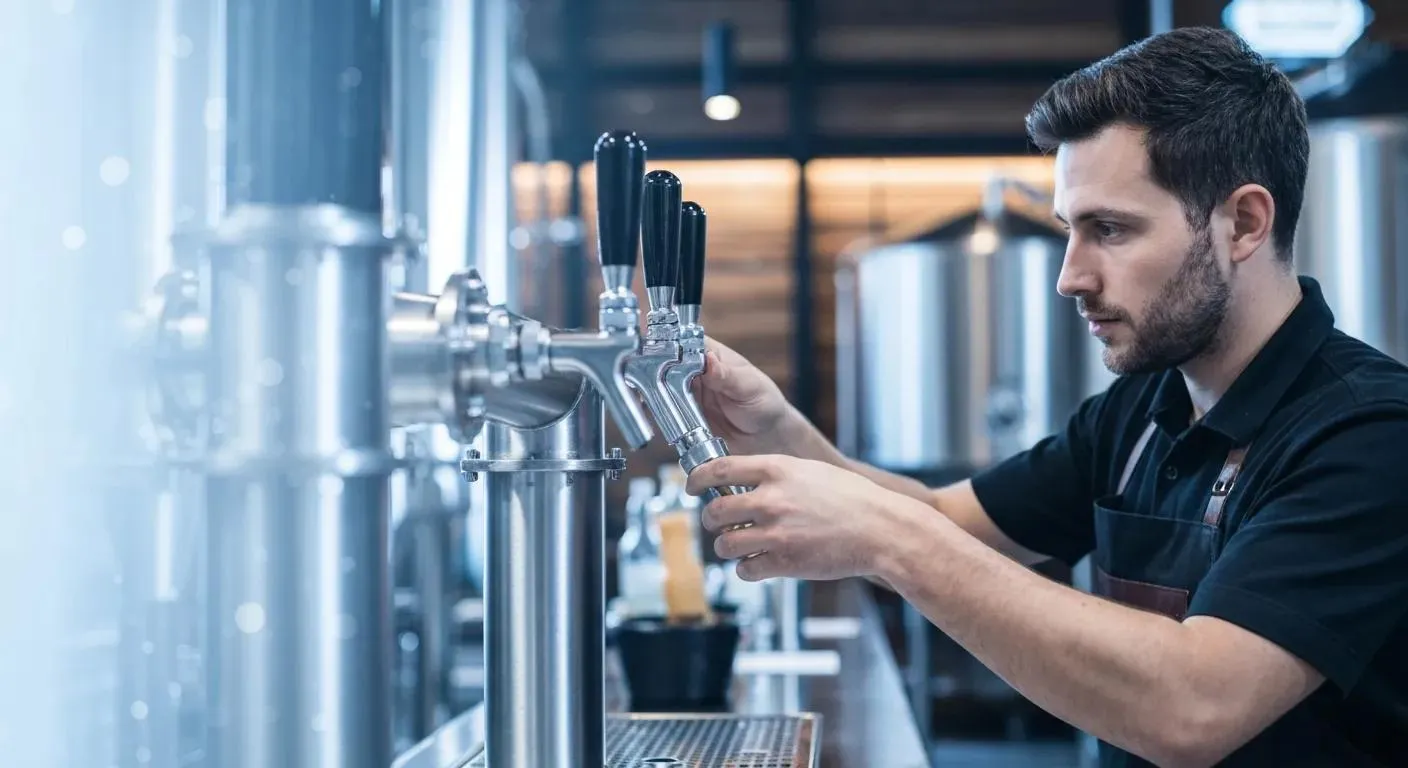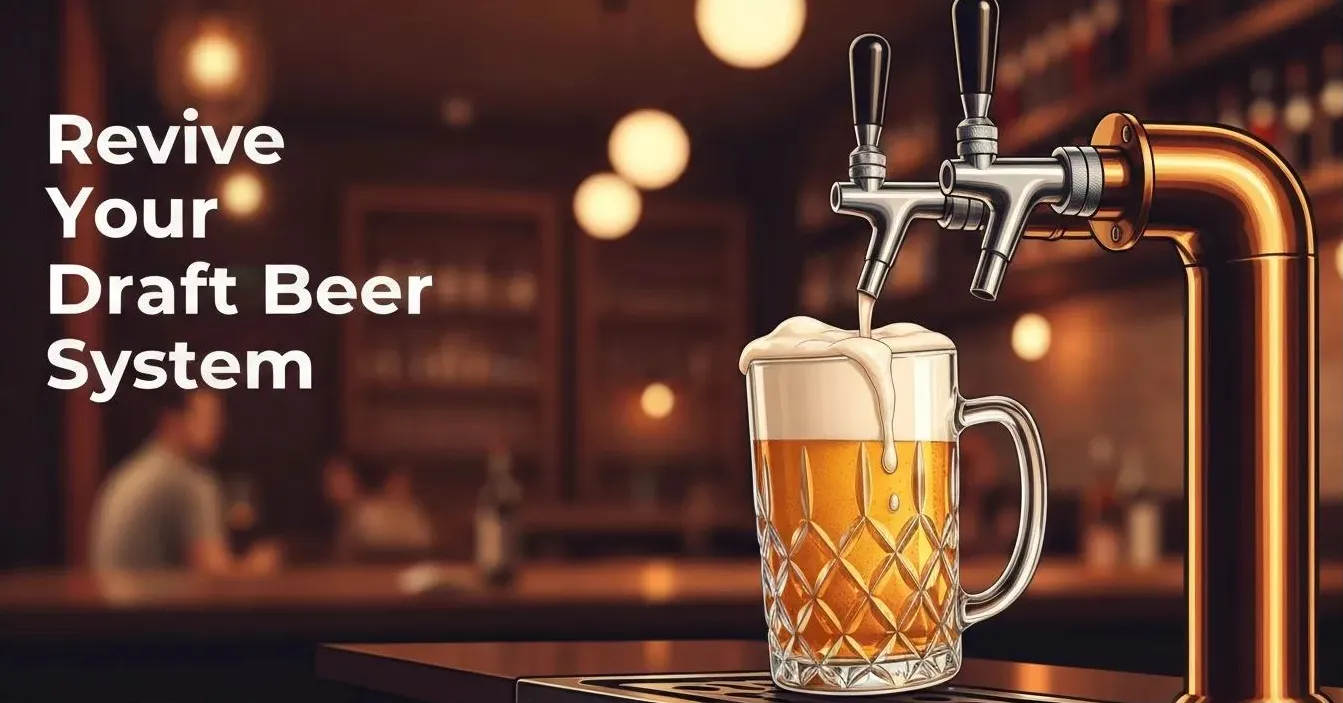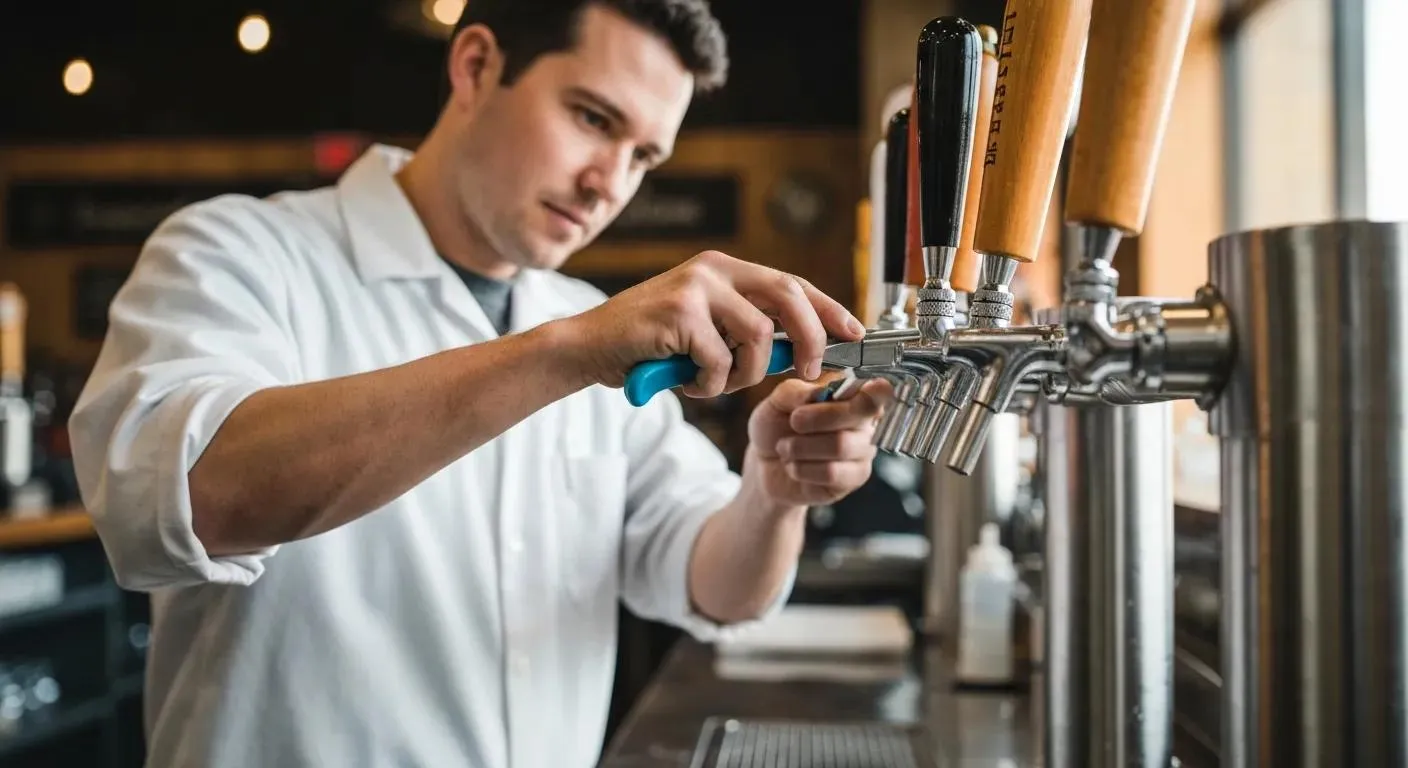TOF Secondary CO2 Regulator: Ensuring Precision in Beverage Carbonation

Having an efficient CO2 regulator is essential for any draft beer system.
When it comes to dependable options, the TOF secondary CO2 regulator stands out. This secondary regulator is designed to ensure consistent and precise pressure control. It helps maintain the quality and taste of your beverages while offering easy installation and reliable performance.
The TOF secondary CO2 regulator model includes safety features such as a pressure relief valve, tamper-evident adjustment screw, and bonnet. It also meets UL certification, ensuring it adheres to the highest industry standards. This feature is particularly important for businesses that want to provide quality drinks consistently.
Additionally, it is built with user-friendly features like a pressure gauge, mounting bracket, and side connections, making it simple to integrate into existing systems.
Whether you are looking to upgrade your current draft setup or need a robust solution for a new installation, the TOF secondary CO2 regulator is a smart choice.
Its combination of durability, safety certifications, and ease of use makes it an ideal component for maintaining optimal beverage quality.

Key Takeaways
- TOF secondary CO2 regulators ensure consistent and precise pressure control.
- They meet UL certification standards, ensuring high quality and safety.
- Easy to install and integrate into existing draft systems.
Understanding Secondary CO2 Regulators
Secondary CO2 regulators play a crucial role in managing the pressure of carbon dioxide in beer systems. They ensure that each individual keg receives the right amount of pressure, which helps maintain the quality and taste of the beer.

Components and Functionality
A secondary CO2 regulator unit consists of several key components. The pressure gauge shows the output pressure, usually in pounds per square inch (PSI).
The regulator controls the flow of CO2 from the gas source to the kegs, ensuring the gas source has precise delivery and performance.
Another important part is the pressure reducer, which helps in controlling the gas flow. A safety valve or overpressure valve ensures that the system doesn’t exceed safe pressure levels.
These regulators also include robust attachment mechanisms to secure the regulator to the kegerator or cooler wall. Some common methods involve using ½” to ¾” sheet metal screws or stainless self-tapper screws.
Connections to the CO2 supply line are made using high-pressure braided air lines, secured with either otiker clamps or hose clamps for stability.
Standards and Certification
The uni en iso 2503 standard is critical for ensuring the quality and safety of CO2 regulators. Products meeting this standard are rigorously tested for performance and reliability.
These standards cover aspects like pressure stability and overall safety, safeguarding the beer system from malfunctions.
National standards also play a role in certifying CO2 regulators. Certification ensures that the regulators meet safety and functional criteria. By adhering to these standards, manufacturers help users maintain safe and efficient beer dispensing systems.
If you want to find more detailed guides on secondary CO2 regulators, you can visit Renny's Draft Solutions.
Installation and Configuration
Proper installation and configuration of the TOF secondary CO2 regulator ensure optimal performance and safety.
Wall mounting the regulator using the wall mounting brackets provides a convenient and functional way to secure it to a fridge, kegerator, or jockey box, allowing for easy expansion of the system.
Mounting and Setting Up
Mounting the TOF secondary CO2 regulator involves attaching it to a stable surface like a kegerator wall or cooler. Use a mounting or wall bracket to secure the secondary beer gas regulator together with ½”- ¾” sheet metal screws.

Stainless self-tapper screws with a 5/16 nut drive can also be used for a firm attachment.
Ensure the regulator is positioned near the kegs for easy access and control.
Properly setting up the regulator involves adjusting the dispensing pressure to match the specific requirements of your draft beer system.
This helps in maintaining consistent pressure for each keg. Additionally, the regulator allows for dispensing multiple kegs at different pressures, accommodating various beer styles.
Connecting to Kegs and Gas Lines
To connect the TOF secondary CO2 regulator, start by attaching the gas supply line to the first secondary gas regulator that’s inlet.
Use high-pressure braided ¼” airlines, securing the connections with an otiker or hose clamp. Ensure the connections are tight to prevent leaks.
Next, link the regulator’s outlet to the kegs using appropriate side connections or a distribution bar.
For each keg, adjust and control the valve to set the exact pressure needed. This setup ensures that each keg receives the proper amount of CO2, improving the quality and consistency of the dispensed beer by allowing for different CO2 pressures based on beer style.
Always double-check connections and pressure settings before use.
Maintaining Your CO2 Regulator
Keeping your secondary CO2 regulator in top condition ensures consistent performance for your beer system and extends the life of your equipment.
Regular Maintenance Procedures
Regular maintenance of your CO2 regulator is crucial. Start by inspecting the forged brass components for wear or damage. Any cracks or breaks mean the parts need replacing.
Monthly checks are advisable for the pressure gauge, ensuring it reads accurately.
Cleaning is another key step. Disconnect the regulator from the gas tank and wipe it with a damp cloth.
For deep cleaning, use a mild detergent and water. Make sure to dry all parts completely to prevent water damage.
Occasionally, checking the diaphragm kit helps in maintaining proper pressure levels. Replacement may be needed if it shows signs of wear or damage.
Lubricating the moving parts with a food-grade lubricant ensures smooth operation. Lastly, make sure to use only UL certified parts for replacements to ensure safety and reliability.
Troubleshooting Common Issues
Even with regular maintenance, issues can arise.
One common problem is inconsistent pressure. Check the diaphragm kit for leaks or wear that might cause pressure fluctuations.
Leaks are another frequent issue. Inspect all connections and fittings, ensuring they are tight.
A spray bottle with soapy water can help locate leaks; bubbles will form where gas is escaping. Improper assembly can also cause leaks, so always follow instructions carefully.
Problems with the gauge reading inaccurately could stem from a faulty gauge or clogged lines. Clean or replace these parts as needed.
Ensure the secondary regulator is functioning properly by testing with a calibrated gauge.
If you encounter persistent issues, consult the manufacturer’s website for guidelines or seek professional help for proper resolution.
Selecting the Right CO2 Regulator
Choosing the right CO2 regulator is crucial for anyone looking to maintain consistent and controlled pressure in various applications, especially in draft beer systems. This involves considering several key criteria, comparing different brands, and deciding where to make your purchase.
Criteria for Selection
Materials like stainless steel ensure durability and resistance to corrosion.
Pressure range is another important factor. Consider a regulator with dual gauge settings for precise control of different pressures, such as a double gauge regulator that displays both tank and output pressure.
If the application involves multiple kegs, a secondary CO2 regulator with 2 bodies might be ideal.
Needle valves and ball valves play key roles in adjusting and controlling gas flow.
Additionally, the pressure gauge should ideally go up to 60 psi. Lastly, ensure you have a shut-off valve to prevent unnecessary gas release.
Comparing Different Brands
TOF pressure regulators, based in Italy, fully comply with UNI EN ISO 2503. They are known for their quality and performance in both CO2 and nitrogen applications.
These regulators often include features like a removable safety valve and G1/4 connections.
Brands like Micromatic offer high-performance draft beer equipment and are well-regarded for their draft beer regulators.
Always compare features like the pressure gauge, shut-off valves, and overall build quality to make an informed choice.
Where to Purchase
CO2 regulators can be purchased from multiple sources.
Online distributors like Amazon and specialty stores like Micromatic provide a wide array of options. These platforms also offer customer reviews, which can be helpful in making your decision.
Specialized websites such as the TOF srl site offer detailed product descriptions and technical specifications.
It's important to check if these stores can ship to your location and verify their return policies.
Local stores specializing in draft beer equipment or gas supplies often have knowledgeable staff who can offer personalized advice.
Summary
A secondary CO2 regulator is essential in draft beer systems. It allows for precise control of gas pressure to each keg, ensuring a consistent pour.
These regulators can be mounted on a cooler or kegerator wall. They connect to a CO2 supply line with high-pressure braided air lines.
Secondary CO2 regulators typically include features like safety valves and ball valves. These components enhance functionality and safety.
To optimize performance, it's often recommended to use one regulator per keg. This ensures that each keg receives the exact pressure needed.
For more information, see this tutorial on secondary CO2 regulators.



